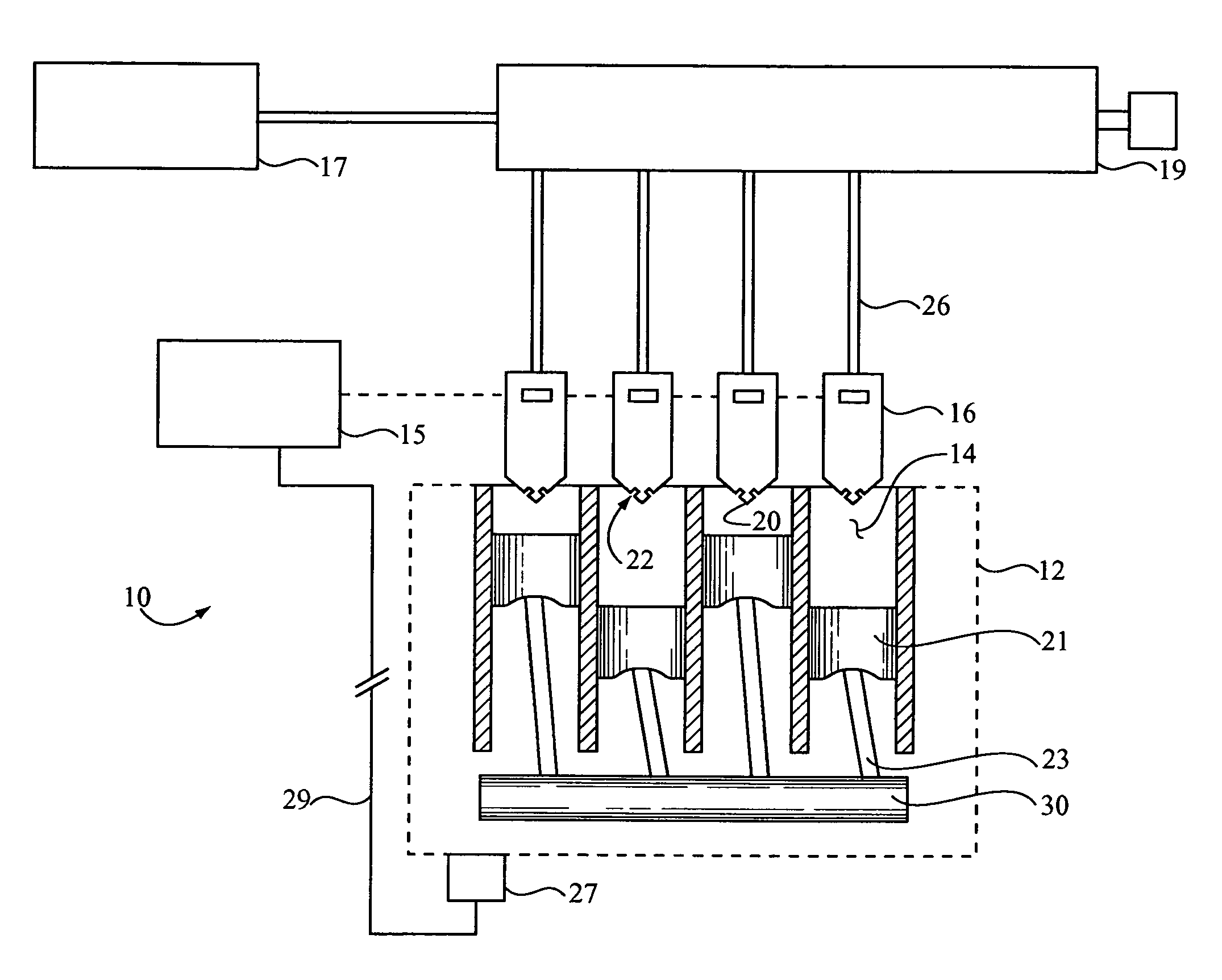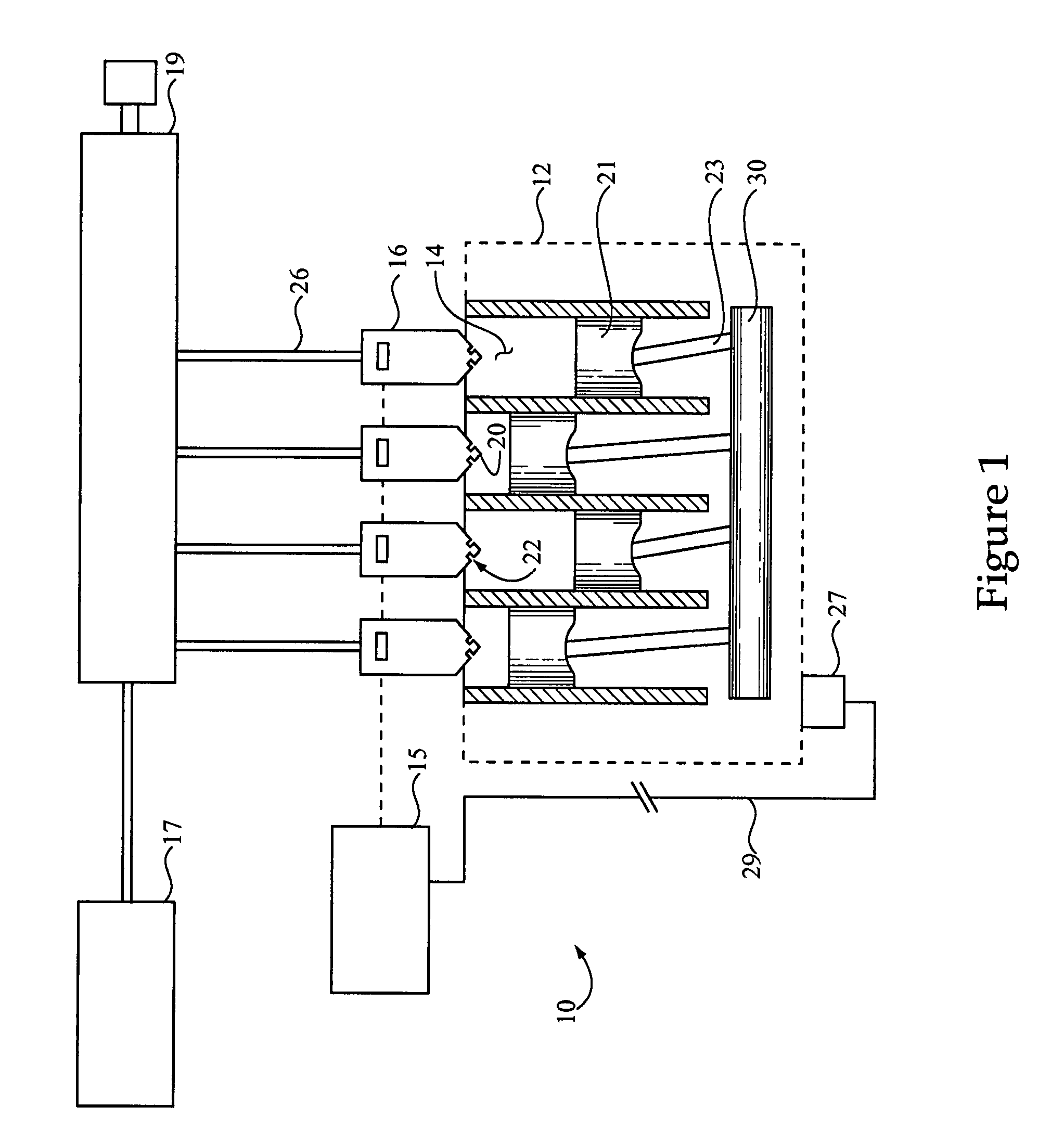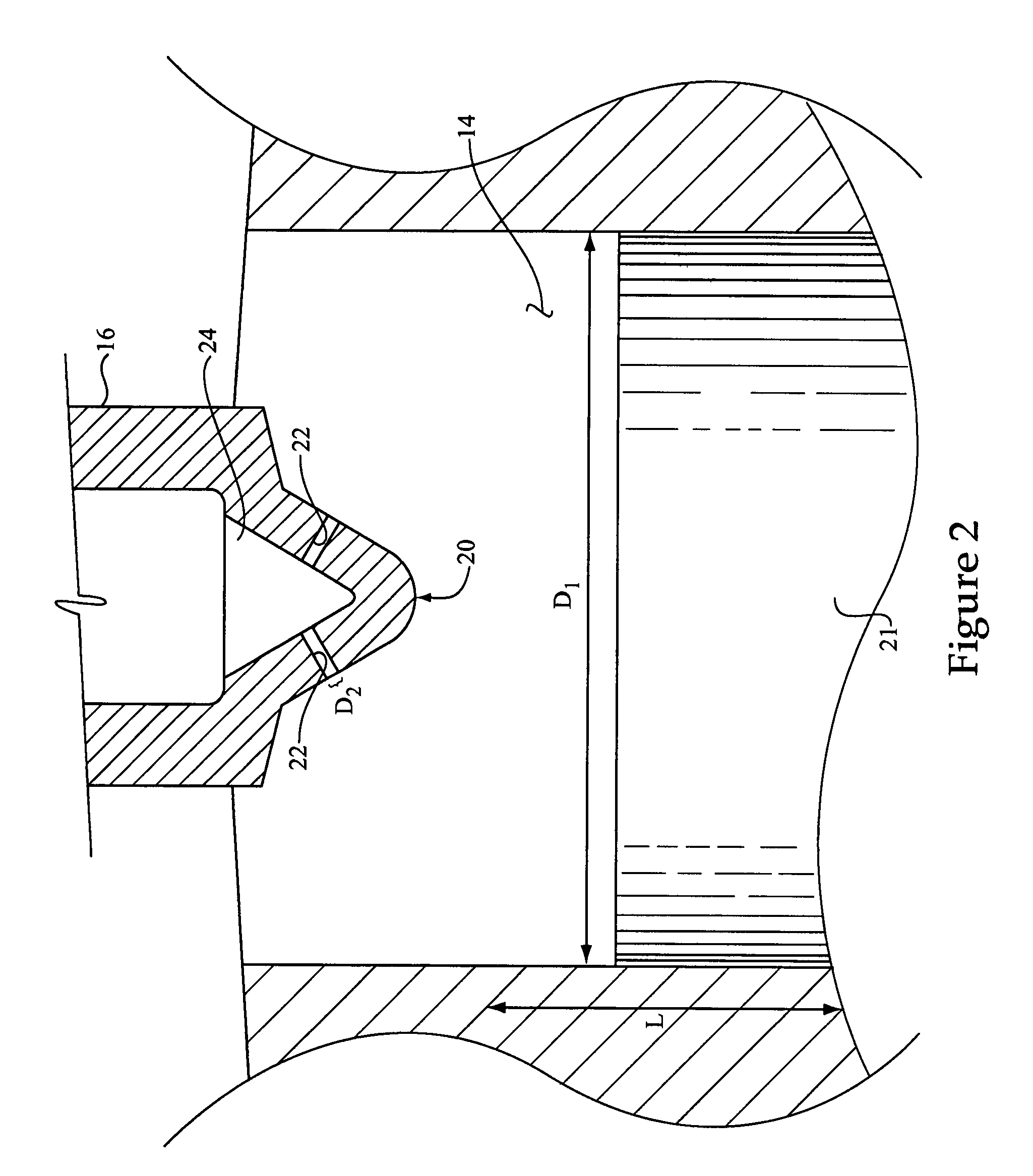Internal combustion engine and operating method therefor
a technology of internal combustion engine and operating method, which is applied in the direction of combustion engine, fuel injection apparatus, charge feed system, etc., can solve the problems of limiting the power output of the engine, inability to fully burn enough fuel per power stroke in the comparatively small cylinder of the more power dense engine, and failure to achieve the higher demand for fuel quantity
- Summary
- Abstract
- Description
- Claims
- Application Information
AI Technical Summary
Benefits of technology
Problems solved by technology
Method used
Image
Examples
Embodiment Construction
[0021]Referring to FIG. 1, there is shown a schematic illustration of an engine 10 according to one embodiment of the present disclosure. Engine 10 includes an engine housing 12 having a plurality of cylinders 14 therein. Fuel injectors 16 are disposed at fixed locations relative to housing 12, extend at least partially into each of cylinders 14 and are operable to direct inject a liquid fuel therein. Each of fuel injectors 16 may include a fuel injector tip 20 extending into the associated cylinder, each tip 20 having a plurality of outlet orifices 22. Engine 10 further includes a plurality of pistons 21, each disposed at least partially within one of cylinders 14 and movable therein to increase cylinder pressures to a pressure sufficient for compression ignition of fuel. The compression ratio may be up to about 15.5 to 1 in certain embodiments. Each piston is coupled with a crankshaft 30 via a piston rod 23 to enable rotation of crankshaft 30 via combustion of fuel in cylinders 14...
PUM
 Login to View More
Login to View More Abstract
Description
Claims
Application Information
 Login to View More
Login to View More - R&D
- Intellectual Property
- Life Sciences
- Materials
- Tech Scout
- Unparalleled Data Quality
- Higher Quality Content
- 60% Fewer Hallucinations
Browse by: Latest US Patents, China's latest patents, Technical Efficacy Thesaurus, Application Domain, Technology Topic, Popular Technical Reports.
© 2025 PatSnap. All rights reserved.Legal|Privacy policy|Modern Slavery Act Transparency Statement|Sitemap|About US| Contact US: help@patsnap.com



